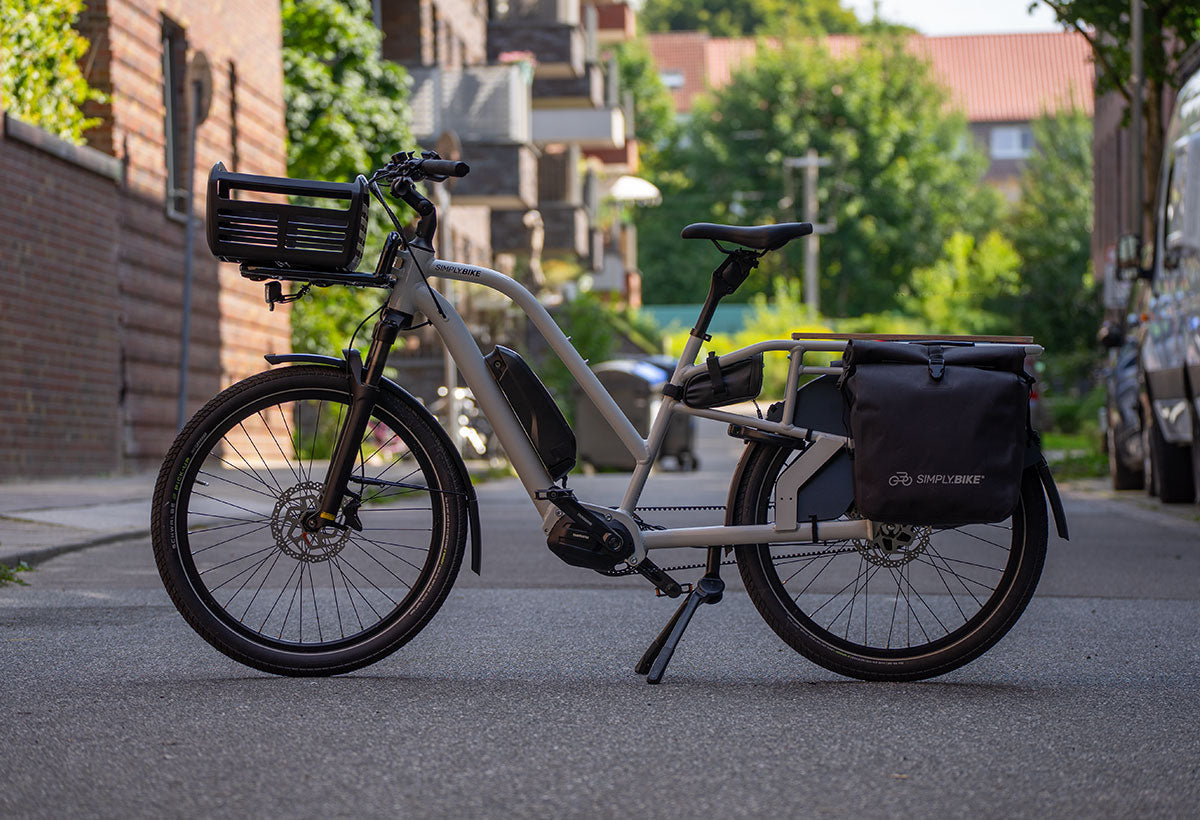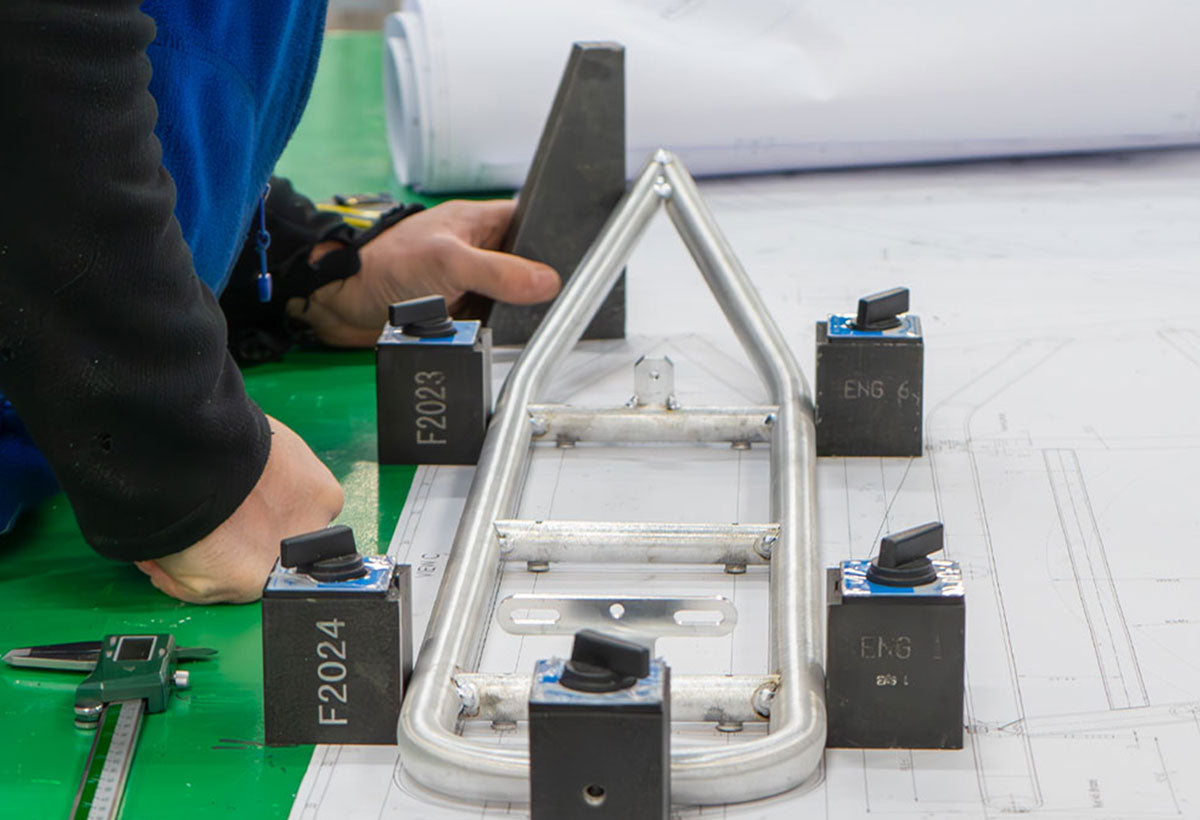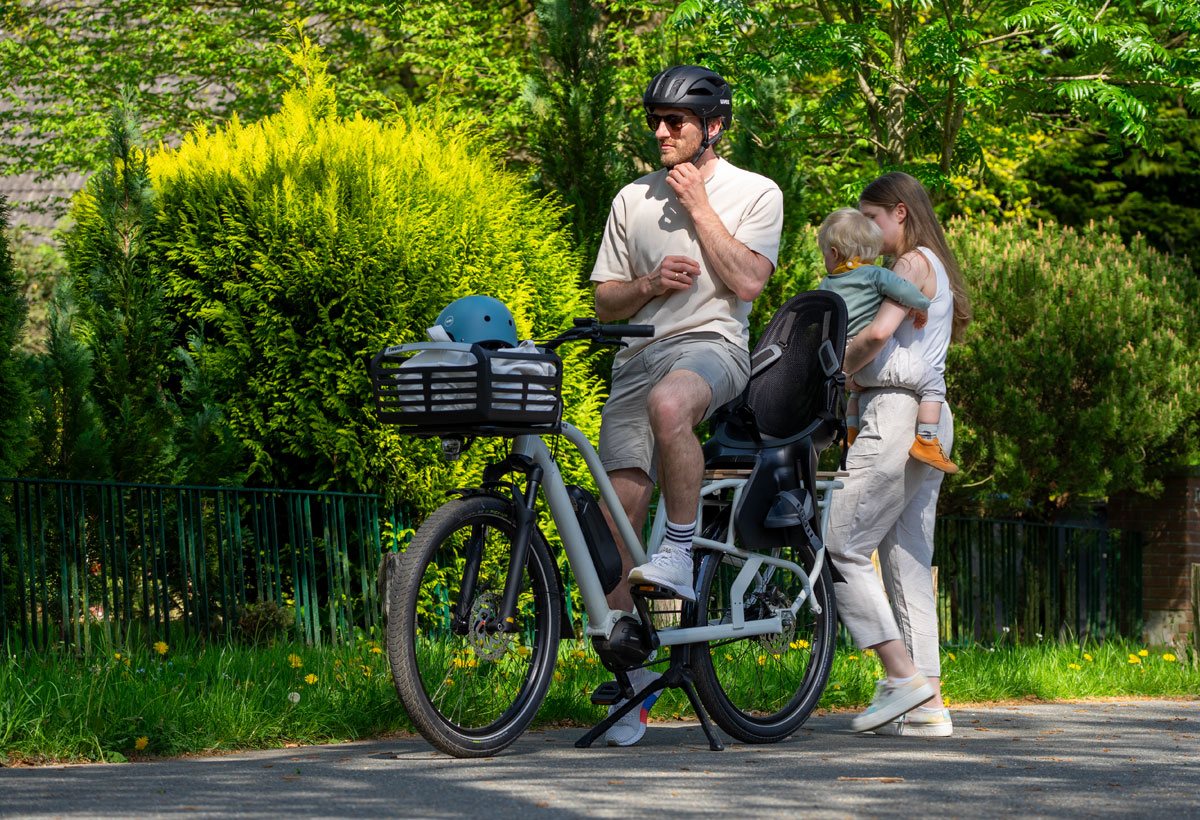Why “riding comfort” is more than just a soft saddle
Riding comfort on an e-bike means sitting comfortably, steering safely, and rolling quietly, smoothly, and steadily – even with shopping or children on board. It's all about ergonomics, damping (reduced vibration), smoothness, and a predictable ride. You'll find the most important adjustments here – plus accessory tips and a short adjustment checklist.
Quick overview
– Ergonomics & seating position are the basis.
– Tires and air pressure often provide the biggest “aha” effect.
– Suspension (e.g. suspension seat post) absorbs shocks.
– The motor and gears determine how smooth the e-bike feels.
– Brakes and smooth running provide safety – and thus subjective comfort.
⸻
1) Ergonomics: Sitting position, saddle & handlebar
Adjust the seating position correctly
Saddle height: Pedal down → knee slightly bent. Too high = hip rocking, too low = knee strain.
Saddle offset & tilt: Your knee should be roughly over the pedal axis in the center of the pedal stroke. Fine-tune the saddle slightly forward/backward. The toe should be mostly horizontal or slightly downward.
Reach to the handlebars: Elbows relaxed, shoulders relaxed. Too long = neck/wrists suffer; too short = back rounded.
Saddle: Shape & width instead of “as soft as possible”
Adjust the width to your sit bones; the surface is grippy but not abrasive. For longer rides, a medium-firm pad is often most comfortable.

Handlebars & grips: ergonomics in your hands
Slightly angled handlebars relieve pressure on the wrists. Ergonomic grips with a larger contact surface prevent numb fingers; the correct grip diameter improves control.
⸻
2) Tires & air pressure: the underestimated source of comfort
Wider tires (e.g., 2.0–2.4 inches) can be run with lower air pressure—this dampens edges, cobblestones, and vibrations. Pay attention to:
• Tire pressure: Not stubbornly “max-bar”, but appropriate to weight + load.
• Carcass/puncture protection: High-quality carcasses roll more smoothly and are less likely to be “wooden”.
• Profile: Fine all-round profile is sufficient for city/gravel – less walking, smoother running.
⸻
3) Suspension: Comfort without rocking
If you mostly ride on asphalt or fine gravel, a suspension seatpost often provides the greatest added value—right where you sit. It absorbs shocks without making the bike feel too soft.
→ Tip: Suspension seat post from ergotec for more cushioning and seating comfort:
ergotec – Suspension seat post
A comfortable front suspension fork (moderate travel) stabilizes the front wheel and improves tracking. Proper adjustment (SAG/sag) and regular maintenance are essential.
⸻
4) Motor, drive & gears: gentle support counts
Gentle motor assistance feels like you're "simply pedaling harder" – without any jerking. A torque sensor doses power to match your effort, and Eco/Normal/High adjust the character. For comfort, predictability > brutality.
Circuit & Development
• Finely graduated gears prevent strain in the drive and keep the cadence comfortable.
• Hub gears are often quiet and low-maintenance – comfortable for everyday use.
• Belt drive (instead of chain) runs cleanly, quietly and is almost maintenance-free – this increases noise and maintenance comfort.
Example of a comfort-oriented longtail e-bike
If you're looking for a setup that's easy to control while riding and suitable for everyday use (family, shopping, touring), check out the Simply.Lift STEPS – Longtail Cargo E-Bike with quiet, gentle assistance and components suitable for everyday use:
Simply.Lift STEPS Cargo E-Bike
⸻
5) Braking & Smooth Running: Comfort begins with safety
Hydraulic disc brakes with good modulation are applied smoothly—no "on/off" feeling. When carrying a load or children, 4-piston brakes and larger discs offer more reserve; less hand force = more comfortable riding.

Frame/running smoothness
A stiff, neatly laid out longtail luggage area and balanced load distribution (e.g. child seat + spoke protector) improve directional stability – and thus subjective comfort.
⸻
6) Accessories for more e-bike comfort (quick wins)
• Suspension seat post – shocks out, back thanks you →
ergotec – Suspension seat post
• Suitable saddle – width/shape to match sit bones.
• Ergonomic handles – larger support, fewer pressure points.
• Wider tires – with adjusted pressure for cushioning & traction.
• High-quality pedals – good grip, large platform, fewer hot spots on the foot.
• Suspended/comfortable front – adjust the suspension fork correctly.
• Quiet, low-maintenance drive system – e.g. belt drive in combination with hub gears.
⸻
7) Comfort for families: relaxed travel with kids
With children, the system weight increases – tires, brakes and smooth running become more important. A longtail like the
Simply.Lift STEPS is surprisingly maneuverable, yet remains stable when it matters. Also, keep in mind:
• Spoke protectors and suitable child seats (safety = comfort).
• Increase tire pressure and spring support weight – relieves strain on your back and neck.
• Smooth engine characteristics so that starting remains predictable.
⸻
8) Checklist: how to conveniently adjust your e-bike
1. Saddle height: heel on pedal down → leg almost stretched → then ride normally and fine-tune.
2. Saddle tilt: Start horizontally; with pressure at the front, tilt slightly downwards.
3. Reach: If you grip the handlebars loosely and your shoulders remain relaxed, it's fine.
4. Tire pressure: Start 10–15% below the maximum pressure; test in 0.2 bar increments.
5. Suspension seat post/suspension fork: Adjust to rider weight (follow operating instructions).
6. Grips & levers: Wrists neutral, brake lever easily accessible – control over power.
7. Test drive with load: Simulate children/shopping → adjust pressure/suspension if necessary.
⸻
FAQ (short & sweet)
Does a suspension seat post really provide comfort?
Yes – it absorbs most impacts directly at the contact point. This is especially noticeable on poor asphalt or gravel.
What tire width is comfortable?
Often 2.0–2.4" with adjusted pressure. Crucial factors: total weight, rim clearance, and terrain.
What does the engine do for the feeling of comfort?
Smooth, torque-controlled support – no jerking, with easily selectable modes (Eco/Normal/High).
Which brakes are comfortable to use?
Hydraulic disc brakes with good modulation; 4-piston and larger discs under load.
Is a belt drive more comfortable?
More comfortable in everyday life: quieter, clean, hardly any maintenance – this has a direct impact on the driving experience.
⸻
Would you like to test driving comfort live – with and without kids?
👉 Simply.Lift STEPS test drive & see details
👉 More damping: ergotec suspension seat post






